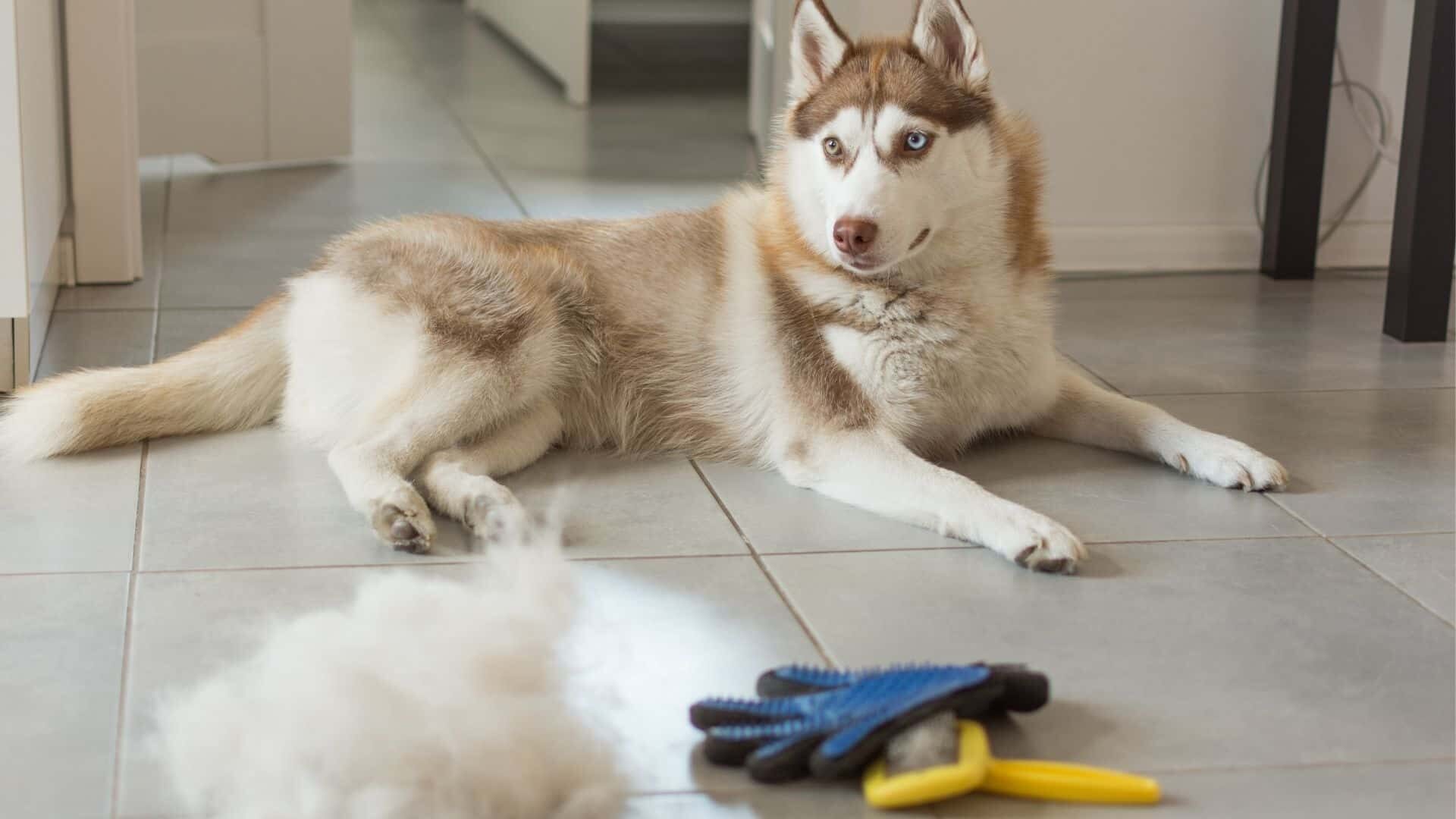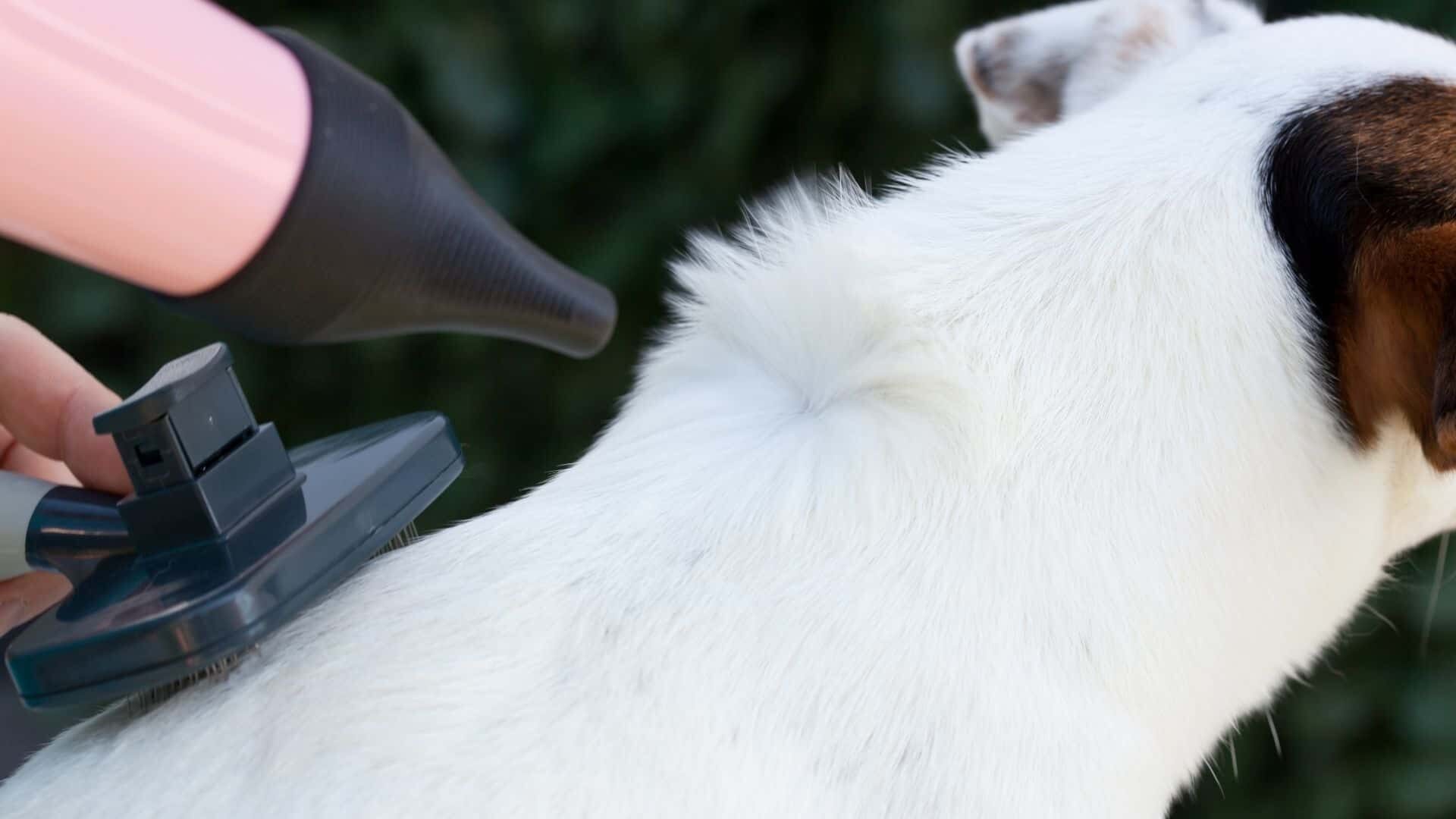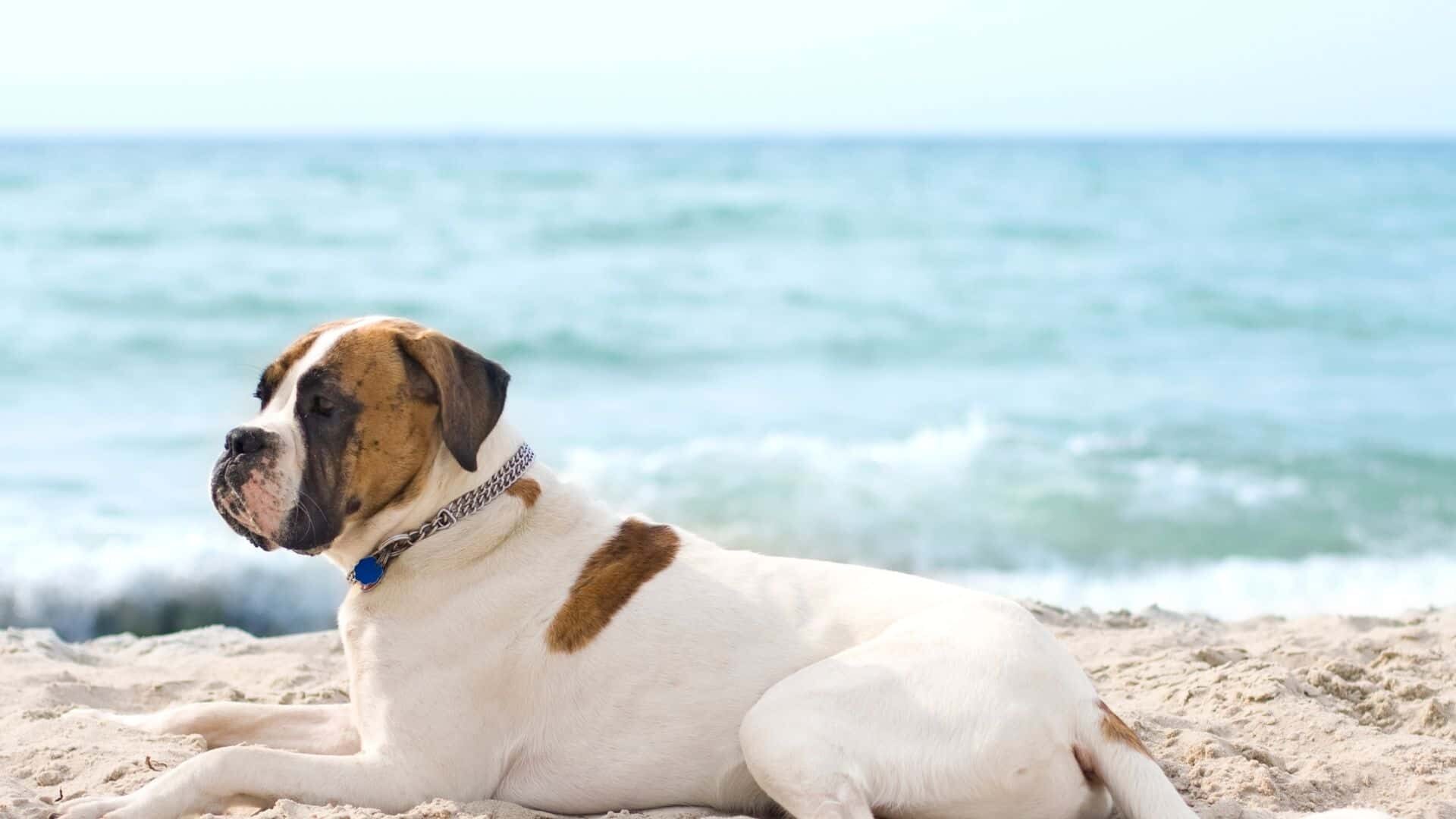Because of their dense undercoat that serves as insulation, dogs with double coats naturally shed once or twice a year. Regular grooming removes the undercoat, which speeds up the transition and reduces the amount of loose hair in your home.
Like our Siberian Husky, some dogs have two coats. This is exactly what it sounds like: a second layer of paint applied to the same surface. In most cases, the top coat is made up of wiry hair.
The undercoat, the dog’s second coat, is shielded from harm by this layer. Soft, downy-type fur characterises the undercoat. When the dog is cold, the undercoat works as a kind of thermal undergarment. With the changing seasons, dogs with double coats shed their undercoats.
Dogs with a single coat tend to lose less hair than those with a double coat. Only the top coat of fur is present on these canines. You can see their skin behind their fur if you divide it.
What is a “undercoat?”
In many dog breeds, the outer layer is made up of guard hairs on top of a delicate, softer fur layer. The dog’s undercoat acts as an insulator, protecting her from both heat and cold. Another element that they guard against is water. An abundance of fluffy undercoat is released twice a year.
When it comes to dog undercoats, they are exactly what they sound like; they are an additional layer of protection beneath your dog’s outer coat. Breeds native to colder climates, such as the German Shepherd, Pomeranian, Chow, Husky, Malamute, and Samoyed, tend to develop undercoats.
The lengthy, coarse outer coat of a double-coated dog serves to shield the delicate, fluffy undercoat. Dogs’ undercoats are typically lost in the spring and fall, but their outer coats are discarded year-round.
At the beginning and end of each season, breeds with an undercoat require a full deshed and blowout to remove all of the undercoat. Brushing the undercoat throughout the year is necessary to prevent matting and to remove all of the loose fur during shedding season. A rake or a deshedding tool can be used to accomplish this.
Does it matter if the dog’s undercoat is removed?

Summer might be a challenging time to move your pet because of the increased heat. Your dog’s trip might be made more comfortable by making sure he or she is properly groomed.
To keep your pet from overheating in the summer, doctors, as well as pet-friendly professional groomers, advise against shaving at this time of year. Dogs don’t require exposed skin to be cool because they don’t sweat like humans do.
To be effective, the coat of your pet must be properly groomed. This is a critical time of year to keep up with regular brushing and combing to keep the coat looking its best. It’s possible that a dog’s matted or tangled coat from time spent in his dog crate will trap heat and humidity near to his skin, making him much more miserable than he already is.
Not shaving the double-coated dog breeds such as Golden Retrievers, German Shepherds, and Shelties will keep them cooler. Their undercoat acts as a barrier against the weather. Shaving their coats removes all of the animals’ natural defences. Skin irritations such as insect bites and sunburns might occur as a result.
They will stay cooler if they remove the dead undercoat. A professional undercoat removal at a salon prior to your dog’s departure is the greatest method to make them feel more at ease.
How do you get rid of the dog’s undercoat?
Dogs with double coats rarely get their hair shaved because of the following reasons:
- In the summer, the undercoat helps keep them cool, and in the winter, it helps keep them warm. As a result of the thicker guard hairs, your dog is better protected from sun and insect stings.
- Dogs shed the soft undercoat in summer, but only the guard hairs remain. To keep the skin cool, the undercoat must be in place. Without it, air cannot circulate beneath the outer hairs.
- In contrast to double-coated breeds, single-coated breeds’ hair grows indefinitely. Even if you shave a single furry breed, the fur will regrow in exactly the same way. For a double-coated breed, shaving can be disastrous.
- Hair will regrow, however the undercoat will appear first if you shave your dog. Guard hairs develop more slowly than the rest of the hair on the head. As the new coat grows through, it is likely to be sticky, and the dog’s coat will be covered in grass seeds, twigs, and other plant matter.
- Your dog will be hotter in the summer because of the soft undercoat’s texture.
- It is not possible to lessen shedding by shaving a double-coated dog.
Grooming your dog on a regular basis and doing a de-shed at the start of each season is the greatest approach to keep your dog cool in the summer because it allows the outer coat to function as an insulator and removes all of the dead hair.
Brushing alone is insufficient to remove the undercoat in its entirety. With regular bathing, brushing, and drying with a high-speed dryer, you may remove a lot of the dog’s undercoat.
Regular grooming every four weeks is the best way to keep your pet’s coat in good condition. Your dog’s coat will be in great shape if you schedule frequent grooming appointments with your local Dog Wash franchisee.
Tips to follow while removing dog’s undercoat:
1. A rake for the undercoat
It’s important to realise right away that a regular dog brush will not be able to remove the undercoat from your dog. With an undercoat rake, your dog’s undercoat can be removed in an efficient manner.
To begin removing the undercoat, use a steady hand and a smooth stroke with the rake. Since the majority of dogs with losing undercoats are huge, it takes a long time to remove all of the hair from their bodies. Even though there’s so much mass, it’s not surprising! With each stroke, resist the impulse to apply greater pressure and so remove more fur. Your dog’s skin and mood will be irritated as well as your wrist.
2. Brush on a regular basis
This can help eliminate the dead hair from your dog’s body, which will help keep your house clean. Your dog’s coat type will determine the brush you need, but pin or slicker brushes work well for most double-coated breeds.
Working in small sections, begin near the pup’s head and brush all the way down to the skin. Before moving on to the next section, make sure the bristles are running smoothly through his hair. Continue brushing your dog until he is completely covered from head to tail.
3. Into the Bathtub
A bath can help loosen the dog’s undercoat after you’ve brushed, scraped, and combed him. To avoid a clog due to hair, place a drain cover over the opening. Use your hands to work the water all the way into his skin. Lather up a mild dog shampoo and massage it into your pup’s damp hair.
Do not stop rinsing until the water becomes clear. Rinsing should remove any loose hair, so keep rinsing and combing your hands through his coat to get as much of the shedding hair out as you can. Brush him again after squeezing the water out of his coat and letting him dry.
4. Vacuum
Any variety of vacuum attachments for dog grooming can be used if your pet is not afraid or intimidated by the vacuum. The suction and brush force of these brush attachments work together to remove more hair faster than a rake or brush alone. Some gadgets can be attached directly to your vacuum, while others are stand-alone grooming tools.
5. Please refrain from shaving
Shaving your dog may seem like a good idea if you’re trying to reduce shedding, but this is a bad idea for dogs with double coats. When a person shaves, their hair follicles act in a different way, which might result in a patchy coat when it grows back.
A dog’s coat also works as insulation to keep him warm in the winter and cool in the summer, protecting him from the sun and other factors. Shaving him eliminates this layer of defence, exposing him to the risk of heat exhaustion and skin damage.
How to keeping fur to a minimum in the home?

During the shedding season, it is normal to find clumps of fur all around the house. It can’t be helped. As we’ve progressed, we’ve picked up a few helpful tidbits.
Even a short period of imprisonment can have a profound effect. Dogs shed during this time of year, so it’s a good idea to limit where they may wander around the house. In order to keep dogs out of your bedrooms, you could install a baby gate.
1. Your dog should be groomed frequently
Stop dog hair from accumulating in your house by removing it from its source. Keeping your pet clean and well-groomed should be a regular aspect of their care.
2. Brushing
Brush your dog as often as you can, using a brush or comb made specifically for his/her coat type and coat thickness. For dogs with short hair, a bristle-type brush may suffice, however a rake brush may be required for dogs with longer hair. Brushes that work best on your dog’s hair should be recommended by your veterinarian or groomer.
Undercoats are found in several dog breeds, particularly those that are native to colder climates. The soft, fluffy hair closest to the skin acts as an additional layer of insulation against the cold. When the weather warms up, it sheds more, which contributes to an increase in the amount of hair in your house.
For dogs with an undercoat, you may require a brush that can penetrate the topcoat and trap loose hairs in the inner layer. Grooming gloves are an excellent addition to any dog owner’s toolkit, regardless of the breed. Using these gloves, you may gently remove hair from your dog’s coat as they enjoy the one-on-one time you have with them.
3. Vacuuming
Vacuuming should be done at least once a day. Fur can be found in the most unexpected places. Two times a day, every day, my husband insists on vacuuming. During the shedding season, this is a must-have item. As bad as it feels to have that much of the big guy and then turn around and find clumps everywhere, that’s the worst feeling ever.
4. Feed your dog properly
The food a dog consumes can be seen in its coat. A high-quality diet with digestible protein sources will help your dog’s hair disappear off the floor.
You can’t go wrong with the lint brush! During the shedding season, you can never have enough of them. It’s impossible to leave the house without a smattering of fur. We use our lint brushes at least once a day to keep the hair from building up on the furniture. I recommend keeping a lint brush in your car’s glove box. Outside of the scorching zone, it’s good to be able to use our truck’s air conditioning.
5. Control of allergies and fleas
Ascertain the effectiveness of the allergy treatment provided by your pet’s doctor. In order to keep fleas from biting and scratching, apply bioSpot SPOT ON or Advantage before an infestation occurs.
Watch Massive undercoat removal on lion dog | Video
The question is whether or not you should remove a dog’s undercoat?
Their undercoat acts as a barrier against the weather. Shaving their coats removes all of the animals’ natural defences. Skin irritations such as insect bites and sunburns might occur as a result. They will stay cooler if they remove the dead undercoat.
What’s the best way to get rid of the undercoat on my dog?
A Technique Known as the “Undercoat Rake”
First and foremost, remove any mats that may have accumulated on your floor. The first step is to brush your dog’s coat using a de-matting rake.
Use an undercoat rake or a shedding blade to comb your pup’s hair in the direction it grows.
Bath time.
Rinse with soap and water.
This is it.
A dog’s undercoat may be removed, but is it harmful to do so?
To avoid sunburn and skin cancer, a dog should wear a coat of fur. It is also possible to cause long-term harm by shaving a double-coat. Shaved down to the skin, the undercoat hair grows back more quickly and can push out the guard hairs, which are more slow-growing in the first place.
Do dogs benefit from having an extra layer of fur on their bodies?
Dogs have what’s known as a “undercoat,” which is a second layer of hair beneath the dog’s outer coat and is responsible for keeping him warm in the winter and cool in the summer. In the summer, the undercoat helps keep them cool, and in the winter, it helps keep them warm. As a result of the thicker guard hairs, your dog is better protected from sun and insect stings.
Is it possible for a dog’s undercoat to regrow after being shaved?
In the summer, the undercoat helps keep them cool, and in the winter, it helps keep them warm. Insect and sun rays are kept at bay by the thicker, stronger guard hairs on the top coat. Hair will regrow, however the undercoat will appear first if you shave your dog.
Conclusion

Having a well-groomed dog will not only make you happier, but it will also make him feel better. Additionally, you will save money by learning how to groom your dog and keeping him looking his best at all times.
Bottom up
Please comment below about your ideas and share this “How to Remove Dogs Undercoat at Home: Guide with Techniques” article with your friends.
Stay tuned with our website to find out more exciting stuff. Don’t forget to check out our previous articles too.
Until the, Read about, Is It Dangerous for Flying with Dog Under the Plane: Guide






